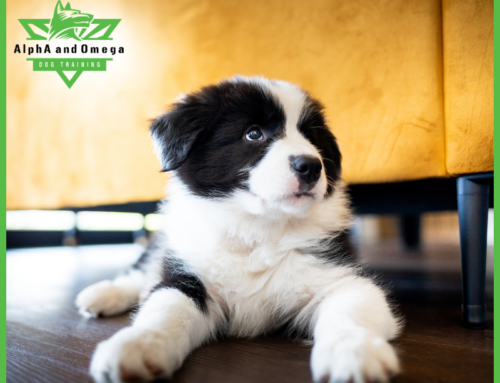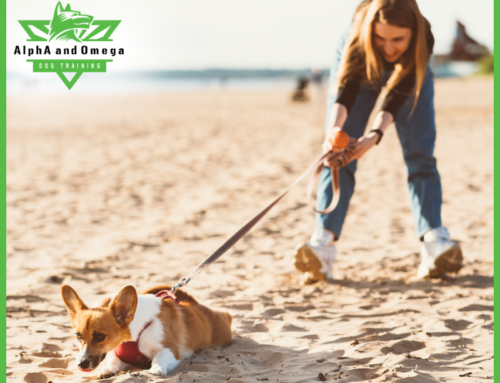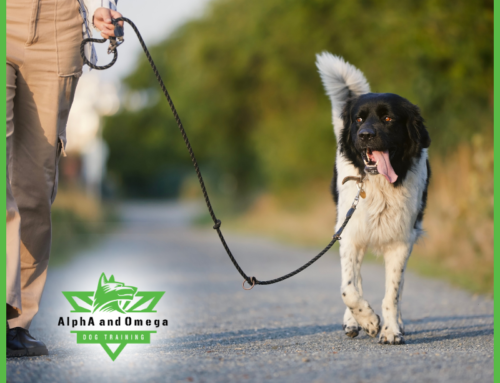If you have a rescued dog, you know it can be hard sometimes to build a bond. Some common issues might affect your dog’s behavior, making it hard for them to adjust to the new home. Indoor ‘accidents’ such as destroying furniture are common and indicate that your dog needs some help coping with anxiety. Here you can learn more about how your rescue dog is showing he’s stressed out, along with some tips on how to manage these episodes.
Do you discover your rescue dog with severe separation anxiety? How dog separation anxiety occur? It goes without saying that any rescue dog has experienced his fair share of hard times, whether he was abandoned, neglected, unable to be cared for by his family, or worst-case scenario, the victim of abuse.
More often than not, dogs that have spent any amount of time in a shelter are more prone to developing certain issues, including anxiety disorders, destructive behavior, and other physical manifestations of fear or distress.
While the majority of these behaviors can be corrected with adequate knowledge, love, patience, time, and occasionally the assistance of a professional trainer, it’s important to recognize the five most common types of anxiety in your four-legged friend so that you may help him acclimate to his new surroundings.

“I’m Scared!” – Fear and Anxiety
Just because your new pal is out of the confines of a shelter doesn’t mean he’ll automatically feel relaxed or show his true personality from the get-go. Most dogs are traumatized and stressed out to some degree upon arriving in their forever-home, and will need a good deal of time to get used to everything, including you.
Give him time to feel things out, as he may show signs of uncertainty, panic, fear or anxiety – remember, he’s still trying to figure out if he’s in a ‘good’ or ‘bad’ place. When you first get him home, let him know he’s in a secure environment by giving him plenty of space – experts suggest setting up his bedding, toys, food and water close enough where he can still see and hear everyone, but a safe distance away for you and your family.
You may want to use a crate with comfy bedding and cover it with a towel or blanket for added darkness and warmth, as many dogs actually find crating comforting – each dog and breed is different, so it’s worth experimenting in the beginning to see if it’s a good fit for your pooch.
He may hide for a while, but give him time – eventually he’ll come out. Don’t force him to socialize; in this case, patience really is a virtue. Let him come to you when he’s ready, even if it takes a couple of days. You can offer him treats, and reassure him in a calming voice that he is safe. If you’re concerned that your dog’s anxiety hasn’t improved after several months, you may want to bring him to your veterinarian for a complete physical to rule out any medical conditions.
Helpful tip: Dogs don’t always like hugs – in fact, if you shower your dog with too much affection too soon, it might stress him out even more, especially if he’s a recent rescue. The best advice? Let him come to you when he’s good and ready.
“Hands Off My Food!” – Food Aggression
Anxiety aggression in dogs is common. Even chances are your furry friend had to battle it out when it came to chow time in the shelter, so he’s probably not used to having his own bowl for drinking and eating. Since he’s unaccustomed to the new dining arrangements, he may not understand the concept that no one is going to take his dish away from him, and may react badly if another dog or person gets too close to him while he’s eating.
If your dog is showing signs of aggression, including growling, baring his teeth, snarling, lunging or even biting during his mealtime, chances are he’s still feeling insecure that his food might be in jeopardy or taken away. What things to help dogs with anxiety?
Reassure him by moving his bowl to his crate, the bathroom, or another small enclosed area (such as the garage, porch or laundry room) and don’t disturb him until he’s finished eating. Over time, he’ll realize that he doesn’t need to guard his food.
Helpful tip: When it comes to meal-time with your pup, consistency is key: at the heart of food aggression is your dog’s anxiety over his supper. Keep it simple and feed him the same time every day – dogs have an amazing internal clock and crave rituals and routine. Creating a regular feeding schedule will help alleviate his anxiety while curbing his aggressive behavior.
“That’s Mine!” – Resource Guarding
Similar to food aggression, resource guarding is a canine behavior that exemplifies a dog’s ‘ownership’ over ‘his’ things, such as toys, food, and even people. This sort of possessive behavior is commonly recognized in rescue dogs, particularly because they were forced to share (and often compete) for everything in the shelter, including the affection of a human being. You often have seen dog on dog aggression as well.
Once you bring your dog home, he may attempt to guard you from another pet, family member or visitor – in his mind, you belong to him and he doesn’t want to share or even let anyone near you (he may also have a favorite toy that he is overly possessive of).
If you notice signs of resource guarding, fear not; there are certain behavioral techniques you can use to correct the issue. The moment he begins to show signs of this behavior, remove his access to the catalyst, including toys, beds, food, his blanket, and people. For example, if your pooch is curled up next to you on the couch but then begins barking when your spouse enters the room, put the dog on the floor immediately.
After repeatedly being removed from a favorite object or person, he will make the connection that this sort of behavior is undesirable. However, if the problem persists, you may wish to consult a professional dog trainer for expert assistance.
Helpful tip: In this case, best dog anxiety specialist can better assist your dog to get out from the anxiety.
It’s especially important to bond with your rescue dog in the early phases to develop trust and build a strong relationship. This will happen naturally as you create rituals, get to know one another, establish boundaries, and of course, show them affection. However, how you react to their misbehavior is crucial: physical punishment is never an option, neither from an emotional or humane standpoint.
Besides the potential to harm your beloved pet, you can permanently damage the bond you’ve created. Research proper methods to discipline your pet and educate yourself as a fur-baby parent; if you need resources or assistance, contact your vet or a licensed dog trainer for professional guidance.
“I’m Marking My Territory!” – Leg Lifting
It’s normal for your dog to want to thoroughly explore his new digs, including sniffing every square inch of your home and property. However, he may be tempted to mark his territory, particularly if he smells another dog. This behavior shouldn’t be confused with being housebroken: dogs that have been trained properly may still mark their turf.
So what’s a frustrated pup-owner to do? Experts suggest eliminating this behavior by spraying the dog with water when you catch him in the act. It won’t hurt him, but most dogs dislike it and will stop mid-mark. The key to success for nearly every behavior-correcting exercise is repetition: eventually your dog will learn that this sort of thing is unacceptable.
In addition, when your dog marks areas within your home, be sure to use an enzyme cleaner to treat pet stains. In addition to cleaning the soiled area (and eliminating the unpleasant odor), it will remove your dog’s scent, so he won’t be tempted to mark over the area repeatedly.
Helpful tip: Just as we do with small children, puppy-proofing your home is a great way to ensure your dog’s safety while creating a comfortable and worry-free residence for both of you – the less anxious your dog is, the less chance of him acting out. This goes for all adoptees: even older dogs can benefit from a safe and hazard-free environment.
“Please Don’t Go!” – Separation Anxiety
One of the most common behavioral problems rescue dogs suffer from is separation anxiety, a condition in which the animal is so upset when left alone that he reacts in a variety of ways, such as barking profusely, having accidents indoors, or destroying the furniture.
For mild cases of canine anxiety, you can help your pup overcome his fears by sticking to a regular schedule and seeing if crate training is an effective option. It’s important not to force crate-training, but if your dog is cooperative, he may find his crate becomes a safe haven to relax until you return, which in turn will protect him from self-harm (and your home from damage).
Repeated crating while you are gone for an extended period of time (i.e., for work or errands) can acclimate your dog to spending time by himself, as well as prevent him from acting out.
For more severe cases of separation anxiety, you may wish to seek professional assistance, either through your vet or with the help of a licensed dog trainer. Be sure to follow through with all of the advice you’re given, and remember – patience, commitment, love and time are the truest measures of success.
It’s also important to note that having another dog around won’t necessarily help the situation – your anxious dog wants to be with his owner, not another pooch. Therefore, it’s best to address your dog’s anxiety issues before getting another dog.
Helpful tip: If you’re going to be out of the home for more than 7-8 hours, experts suggest a dog sitter, having a friend or family member check in on your pet (be sure the person visiting is comfortable with your dog – arrange a meeting in advance if possible while you’re home), or putting him in a kennel if absolutely necessary. However, for the first few months of owning your newly-adopted rescue, it’s best to avoid leaving your dog in a kennel, as this is a crucial time period in his emotional development.
Building A Bond with Your Rescue Dog: Creating Rituals & Establishing Routines
As we’ve discussed, the safer and more at ease your canine companion feels in his new home, the less anxious he’ll be – and the sooner you’ll discover your rescue’s true personality. Making your dog feel comfortable within your house or apartment takes time and effort, but in the long run, the bond you create will be something you’ll cherish for a lifetime.
Anyone who has ever owned a pet knows that our fur-babies become our family. Here are a few more helpful suggestions when acclimating your rescue dog to his surroundings:
- Slow and steady: Set a slow and even pace when it comes to showing your dog attention or new experiences. Although your gut instinct may be to shower your dog with affection, it can be counter-productive and possibly lead to separation anxiety when you’ve got to leave the house. Believe it or not, it’s better to have a mildly bored doggy than an overstimulated one – Now, how to calm an overstimulated dog creating a daily routine is paramount to your dog’s developmental and behavioral well-being.
- Like clockwork: As we’ve addressed earlier, getting your rescue on a regular eating schedule is essential for his overall well-being. If possible, create a calm and quiet atmosphere for meal time in the beginning, which is particularly important for pups that lack an appetite. In addition, for dogs who display signs of food aggression, it’s best to have your dog eat shortly after you have, as this simple routine can impart that you’re the ‘pack leader’ (dogs are pack animals by nature and react accordingly to human cues; in this case, you’re showing him you’re the ‘alpha’ by eating first).
- A walk in the park: Exercise is one of the most beneficial things you can provide for your dog – besides its obvious physical and mental health benefits, daily walks, playtime and interacting with your dog allows for quality bonding time that is invaluable to you and your rescue’s relationship.
- Mind your manners: Although taking the extra steps to train your dog properly can be time-consuming (and even exasperating), teaching your dog proper dog-walking etiquette, socialization skills and other basic behavioral modification techniques is vital in the early stages of adoption. If you find you’re at an impasse, consult a professional canine expert right away to curtail the problematic behavior.
Reference: {https://canna-pet.com/common-anxieties-rescue-dogs/}
We can help to reduce your dog’s anxiety and stress. Our professional dog training will help you grow – and enforce – your bond. Connect with us on Facebook at https://www.facebook.com/alphaandomegadogtraining/ or call (844) 739-0990 for a complimentary consultation! We come to you!










